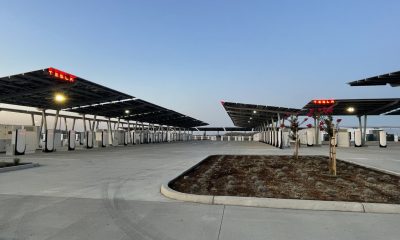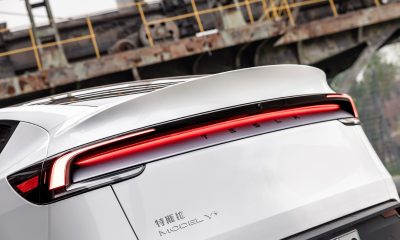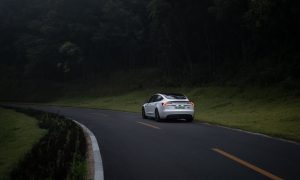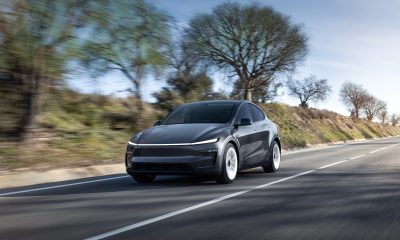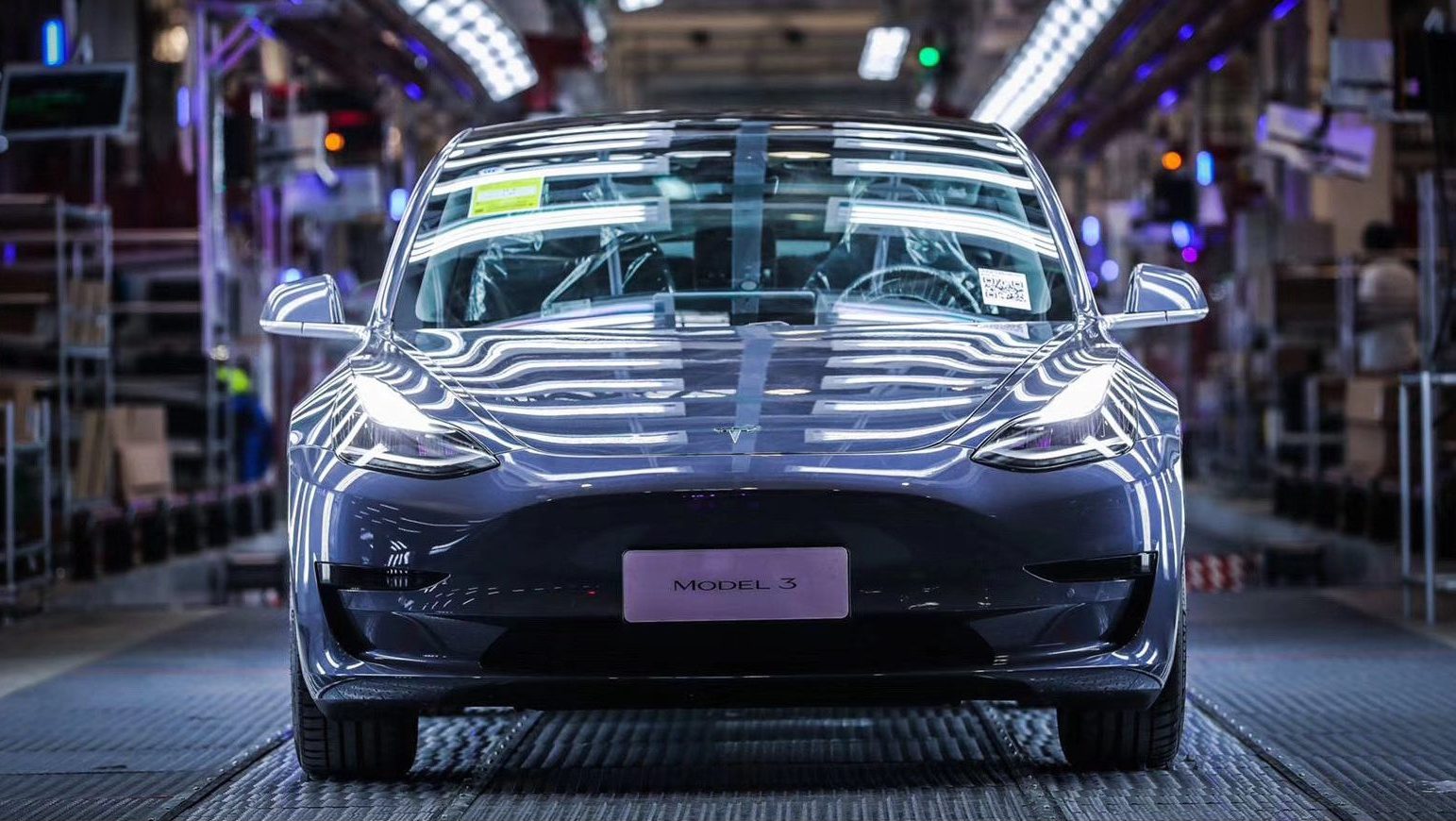

News
Tesla is becoming the company of choice for next-generation auto workers
Tesla’s first handover ceremony for its Made-in-China Model 3 in Gigafactory 3 was memorable for a variety of reasons. For one, it proved that Tesla could meet or even exceed the already-ambitious goals of CEO Elon Musk. It was also an event that was made extra special when a young GF3 worker decided to propose to his partner with his blue MIC Model 3.
The scene is representative of a trend that seems to be present in Tesla’s ranks: the company is becoming the de facto carmaker of choice for the next generation of auto workers. Gigafactory 3’s workers who were present at the handover ceremony were mostly young. This extends to the company’s executives as well. Unlike conventional executives from legacy auto, who are populated by veterans who have been in the business for decades, Tesla’s executives are young, aggressive, and even a tad bit ambitious.
This observation was mentioned by Tesla owner-enthusiast @Ray4Tesla in a tweet following the handover event in Shanghai. Several executives from Tesla attended the MIC Model 3 delivery event, and all of them were in their 30s and 40s. They were articulate, energetic, and seemingly very motivated. In a way, the energy exuded by Tesla China’s executives was fitting for a company whose mission is literally to accelerate the advent of sustainability.
Tesla’s allure for young professionals is not just limited to China. Recent comments from Jorg Steinbach, the Economics Minister of Brandenburg, suggested that Germany may be looking to Tesla to attract young talent as well. “I am optimistic that young people from all over Germany and far beyond want to take part in this project,” he said, adding that the arrival of the electric car maker could allow the region’s workers to future-proof their jobs.
Perhaps it’s Tesla’s disruptive nature, or its startup nature, but the company continues to rank high among young job seekers. Working at Tesla is notoriously challenging, filled with long hours and hyper-ambitious targets. It’s essentially a Silicon Valley startup, but instead of a mobile app or an internet-based service, the company’s product happens to be electric cars and battery storage devices. Stories from former workers at Tesla tell of intense work environments and sudden changes of pace. Yet, it is also one that the best and brightest find very difficult to pass up.

Employer branding specialist Universum’s 2019 survey found that Tesla and SpaceX, two of CEO Elon Musk’s companies, are perceived by engineering students as the best employers in the country. For many young workers, particularly those whose idealism is still intact, there are few companies in the world worth working for, and one of them happens to be Tesla. Overall, it appears that for many of these young workers, the challenges that come with a job at Tesla are well worth it.
Another reason for this is likely Tesla CEO Elon Musk. Bold and daring, Musk has been compared by the media to billionaire-genius-superhero Tony Stark/Iron Man. Just like the fictional Stark, Musk barrels through his projects with an intensity that’s near-obsessive, and at times, with seemingly little regard for his personal safety. While conventional auto CEOs are thought to spend their days behind a desk and at meetings, Musk is out on the roads testing the limits of Autopilot and Full Self-Driving on his personal vehicle. Musk is also known to get his hands dirty when needed, with the CEO being spotted torquing bolts with Tesla’s workers during the buildout of Tesla’s GA4 line for the Model 3 in the Fremont factory.
Ultimately, it is quite inspiring to work for a company whose goal is not just to make money every quarter, but one that fights a far more important battle. It is also inspiring to work under a leader who puts himself in the front lines. This certainly seems to be the case, with a survey from job search marketplace Hired indicating that Musk is currently perceived by job seekers as the most inspiring leader in tech. This is something that has been noticed by veteran Shark Tank judge Kevin O’Leary, better known by his tongue-in-cheek nickname, Mr. Wonderful, as well.
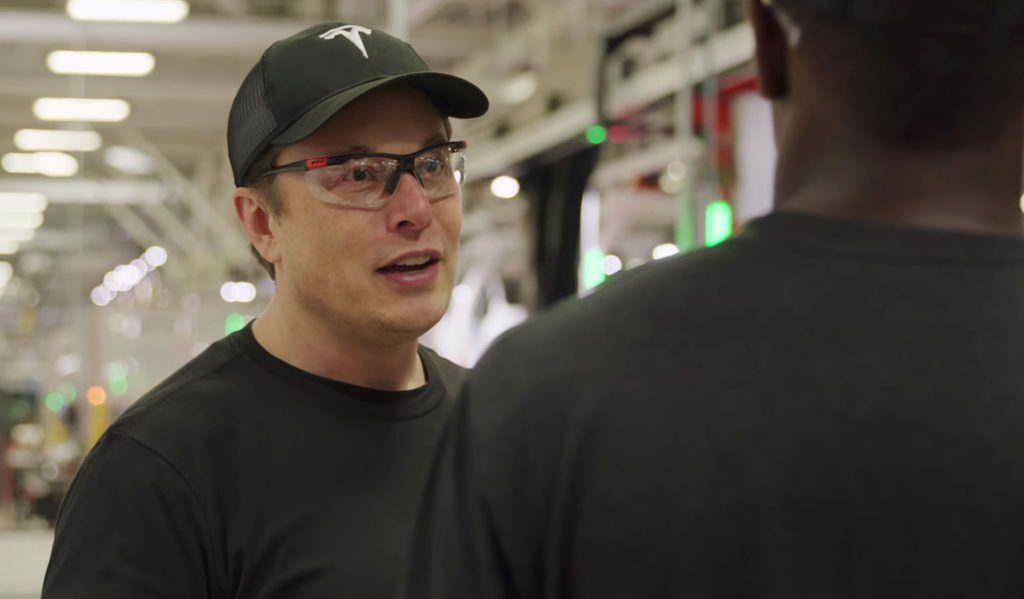
Prior to being a TSLA investor, O’Leary had been critical of the electric car maker. But one of the tipping points for the investing veteran came after watching electric vehicle races that involve engineering students from various schools. Automakers would usually send their HR teams to these races, in an effort to attract up-and-coming talent. But after each race, the Shark Tank judge realized that the winning teams all head over to one company: Tesla. This, according to O’Leary, is a big advantage for the electric car maker.
“Every one of these engineers, the smoking hot kids that sit with their cars, the men and women that sleep with them for 24 hours a day; it’s an unusual culture I’ve never seen before. They all want to work at Tesla. Why? Because the teams are six to eight people. If they go to a legacy car company, they get drowned out in the back somewhere. These smart, young, men and women make a big difference as interns. I can’t believe the access to talent they have,” O ‘Leary said.
With this in mind, it appears that Tesla’s future as an electric car maker is secured, at least with regards to its talent pool. Provided that the company maintains its course, and its leadership remains as motivated, there is very little doubt that the disruptor from Silicon Valley could attract the best and brightest workers when needed.
Elon Musk
Elon Musk confirms Grok 4 launch on July 9 with livestream event
The rollout will be accompanied by a livestream at 8 p.m. Pacific Time.
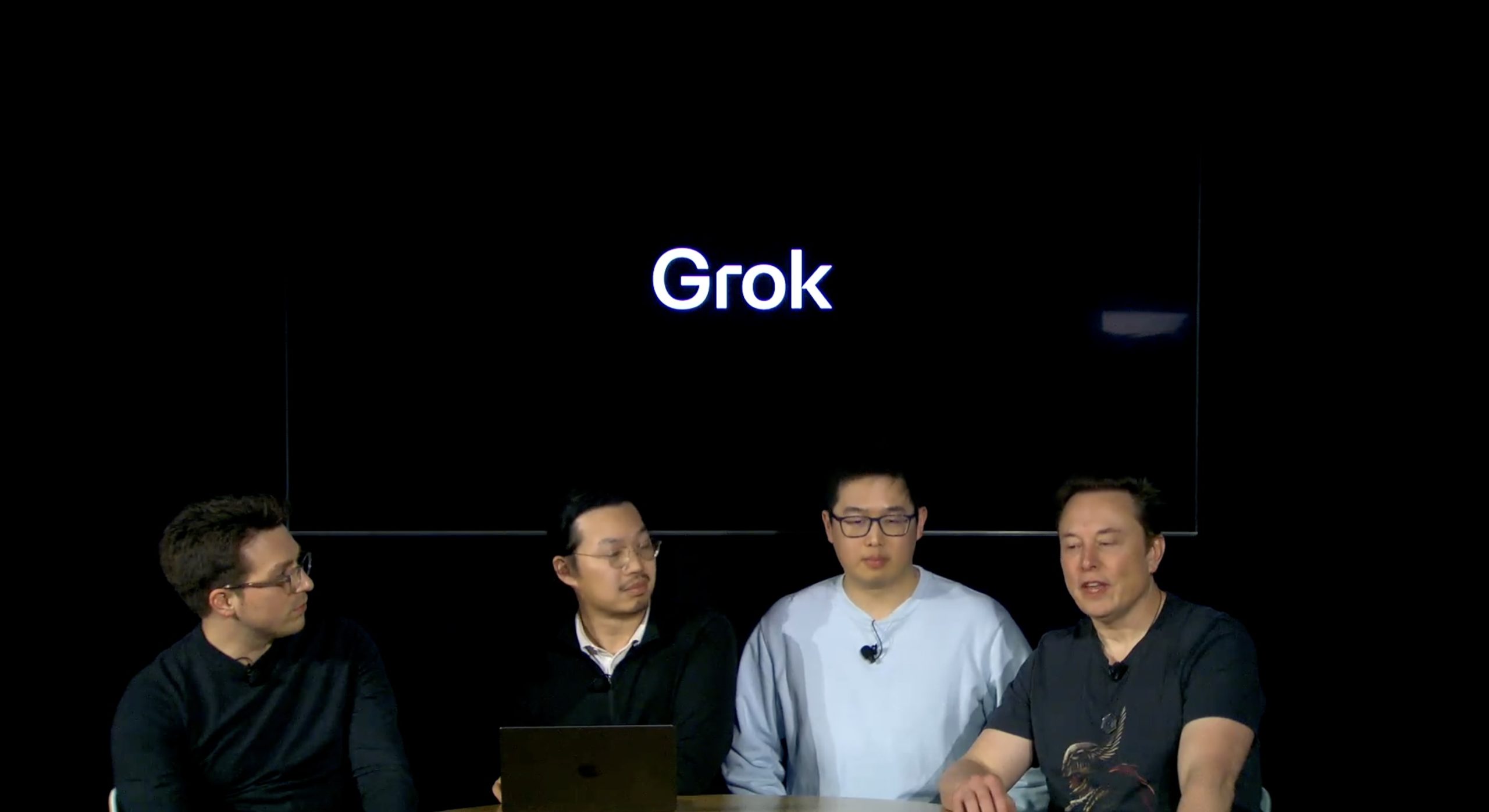
Elon Musk has officially confirmed that Grok 4, the latest version of xAI’s large language model, will launch on July 9. The rollout will be accompanied by a livestream at 8 p.m. Pacific Time, hosted on xAI’s official account on X.
xAI goes straight to Grok 4
Back in May, leaks indicated that xAI was getting ready to ship Grok 3.5. Considering Musk’s recent comments, however, it appears that the artificial intelligence startup would be focusing on the large language model’s fourth iteration instead. As noted in a Financial Express report, users on X have sighted references to Grok 4 in the lead up to the update’s launch, such as “grok-4-prod-mimic” and “Grok 4 Code.”
Musk’s Grok 4 announcement comes as AI competition intensifies between major players including OpenAI, Google, and xAI. With Musk’s Colossus supercomputer fully operational in Memphis, xAI appears to be accelerating its AI product roadmap.
Musk pushes Grok toward political neutrality
Grok 4’s launch also follows a recent controversy involving political bias, as noted in a CNN report. Last week, Grok responded to a user on X stating that political violence in the U.S. since 2016 had come more from the political right than the left. The chatbot noted in a later reply that its answer was based on information from sources like Reuters, the Journal of Democracy, and University of Maryland studies.
Musk stated that Grok’s response was a “major fail.” “Major fail, as this is objectively false. Grok is parroting legacy media. Working on it,” he wrote in a post on X. By the end of June, Musk noted that he was “grinding all night with the xAI team” and that they were making “good progress.” He also stated that the model “Will be called Grok 4. Release just after July 4th. Needs one more big run for a specialized coding model.”
News
Tesla opens massive solar Supercharger station in California
The Supercharger opened to customers ahead of Fourth of July weekend, while Tesla continues phase two of construction on the site.

Tesla has officially launched the first several Supercharging posts at a massive station in California, notably including solar canopies and grid-scale batteries to offer completely renewable charging.
Last week, Tesla announced on X that it opened the first 84 Supercharger stalls of a planned 168-stall station in Lost Hills, California. Additionally, the massive Supercharger project features 11MW of solar canopies and 10 Megapack batteries for off-grid charging powered entirely by solar energy.
Tesla completed the first phase of the project just days ahead of the busy Fourth of July holiday weekend, adding that initial construction took just eight months. In addition to the remaining charging stalls, Tesla says it’s building a set of lounge areas, renderings of which can be seen below alongside current photos of the site.
Notably, the site also includes V4 charging posts for the company’s latest available charging speeds, and it’s located near the busy junction between I-5 and Highway 46 in Kern County.
“Thank you [Kern County] and [PG&E] for collaboration and approvals,” Tesla wrote in a follow-up post.
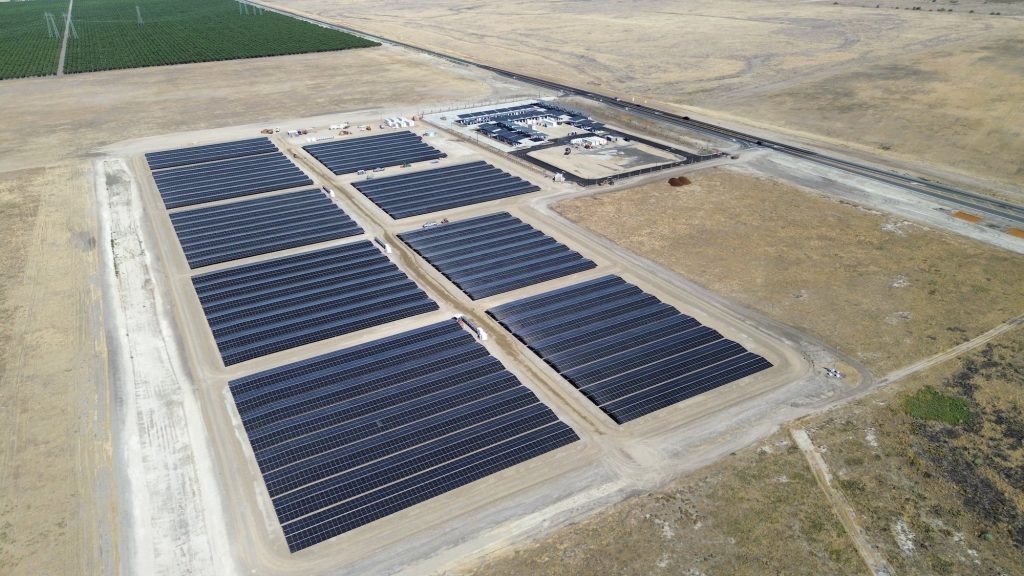
Credit: Tesla Charging | X
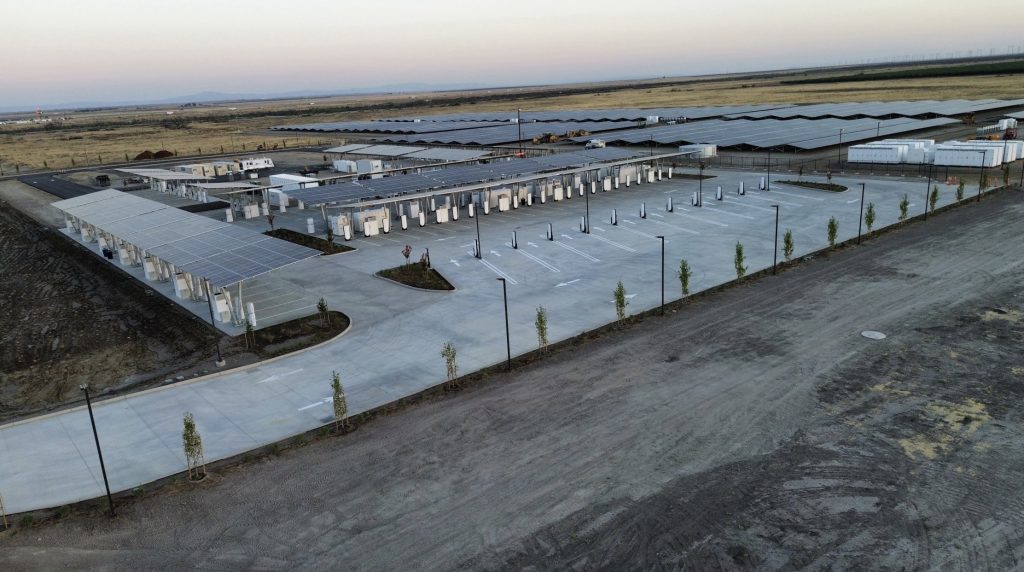
Credit: Tesla Charging | X
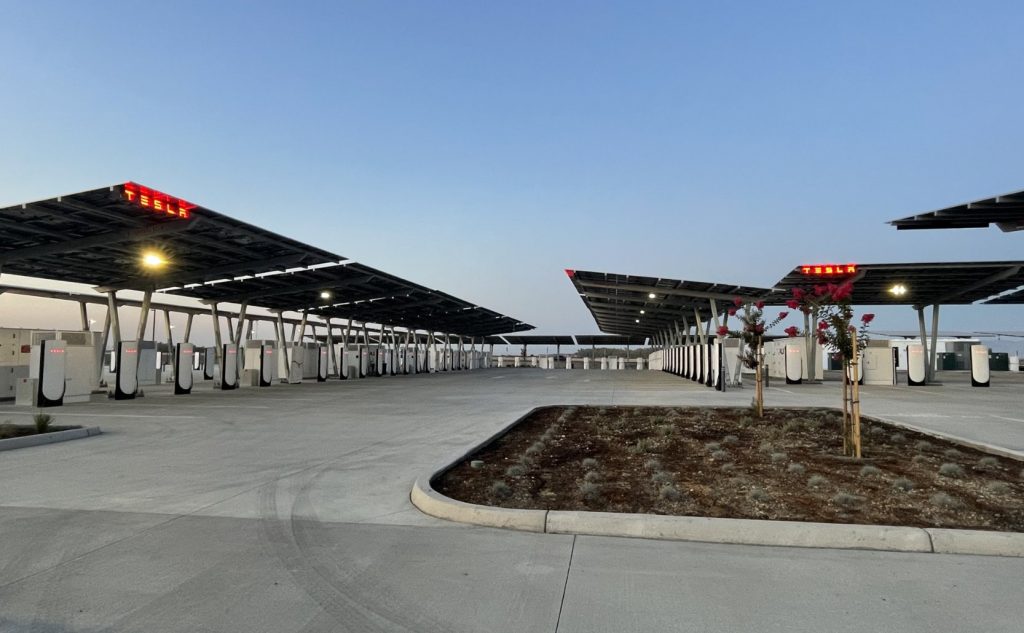
Credit: Tesla Charging | X
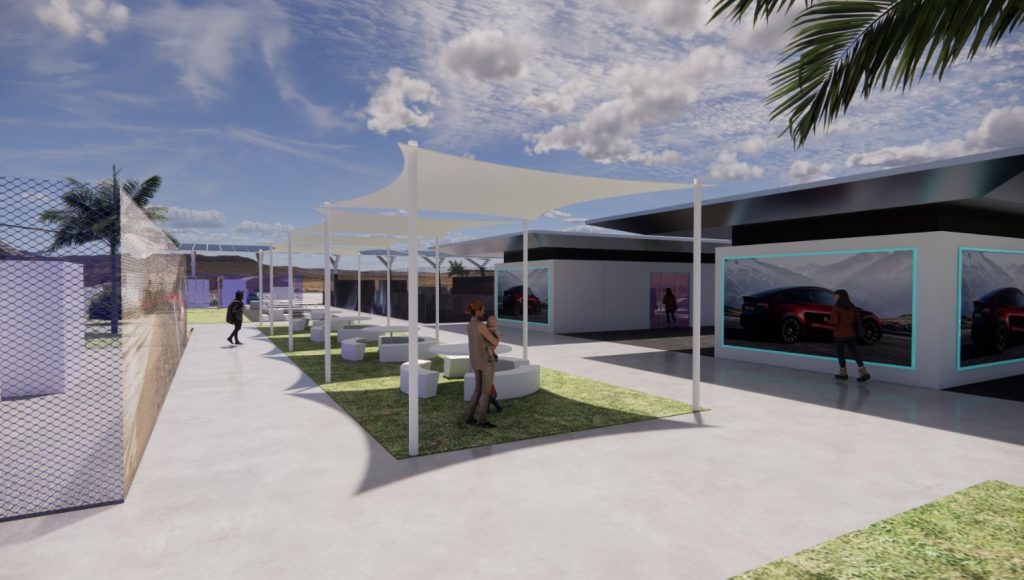
Credit: Tesla Charging | X
Tesla Supercharger Maps for North America, Europe, and Asia pic.twitter.com/0U5r0XRPyo
— TESLARATI (@Teslarati) July 2, 2025
READ MORE ON TESLA SUPERCHARGERS: Tesla launches ultra-fast V4 Superchargers in China for the first time
Testing at the LA Diner, plus Musk update on potential Tesla solar Gigafactory
The huge Tesla Supercharger station completed phase one of construction fairly quickly, especially given how long Tesla has been working on its unique Los Angeles diner, drive-in, and Supercharger location. Still, the company was seen performing some testing at the nearly-completed charging station earlier this month, and will reportedly be holding a job fair.
Elon Musk also responded on Monday morning to a post on X, suggesting that Tesla is “thinking about” building a U.S.-based solar Gigafactory in order to help support increased power needs with AI growth, and to bolster domestic solar production.
Tesla is building a new UFO-inspired Supercharger in the heart of Alien country
News
Tesla driver walks away from major accident with minor injuries
The driver sustained only minor injuries, and the exact cause of the crash remains under investigation.
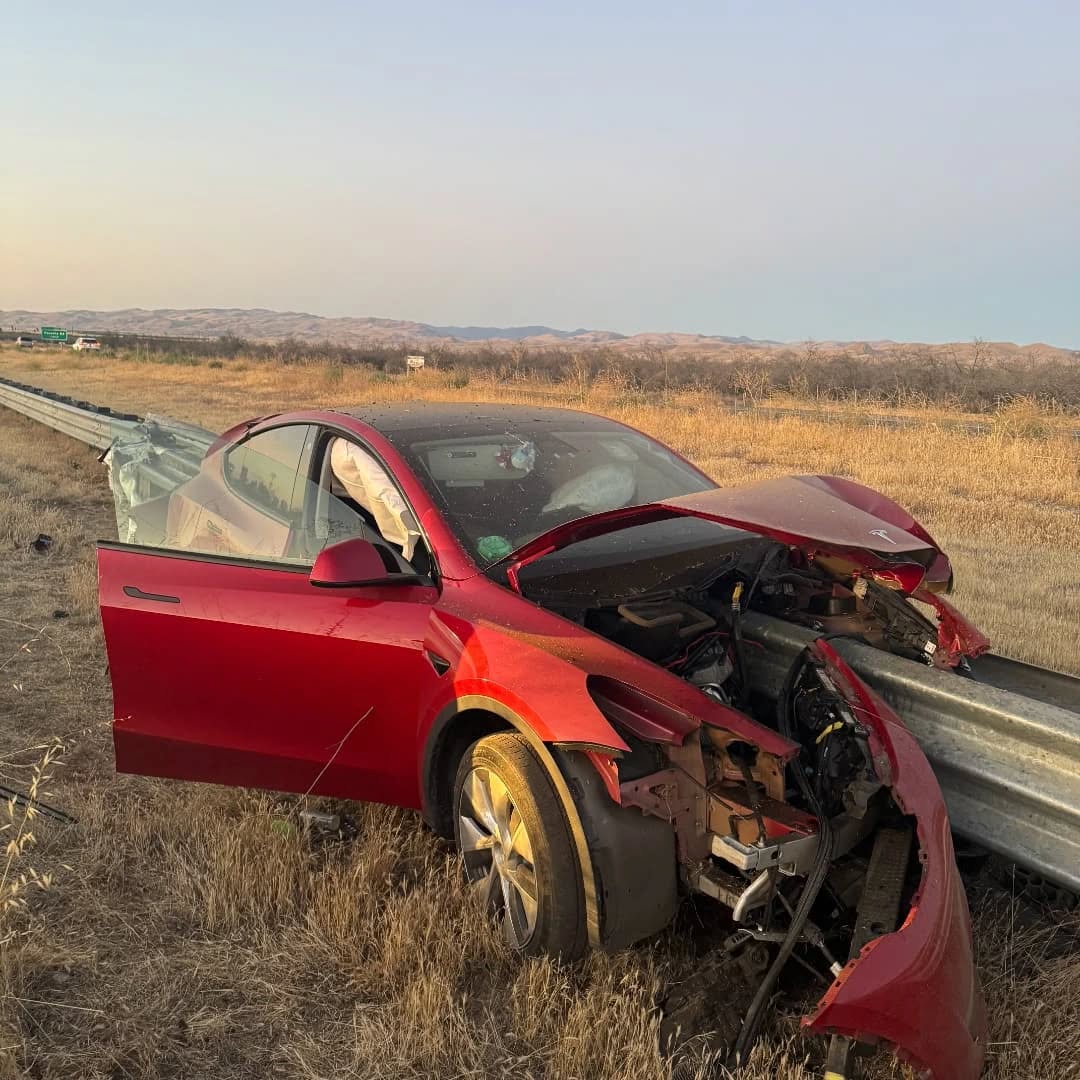
The driver of a Tesla Model Y survived and walked away from a harrowing accident on Monday in California, only sustaining minor injuries despite the vehicle being impaled by a guardrail.
On Monday morning around 4:34 a.m., the Los Banos division of the California Highway Patrol (CHP) responded to the accident on I-5 near Panoche Road, involving a 23-year-old in a Tesla Model Y. According to a post on social media, the driver veered off the road for unknown reasons in the northbound lane, before crashing directly into the guardrail and impaling the vehicle.
You can read the full message and photos from Los Banos CHP below, as were shared in a Facebook post on Monday afternoon.
This morning a Tesla model y was traveling in the #1 northbound lane of I-5 north of Panoche Rd. For unknown reasons driver allowed V-1 to veer off the roadway, travel through a dirt center divide, and crashed into the fixed metal guardrail. Lucky for the driver he only sustained minor injuries and was able to walk away. Driving a vehicle requires 100% attention to the road. Avoid distractions and focus on driving.

Credit: CHP Los Banos (via Facebook)
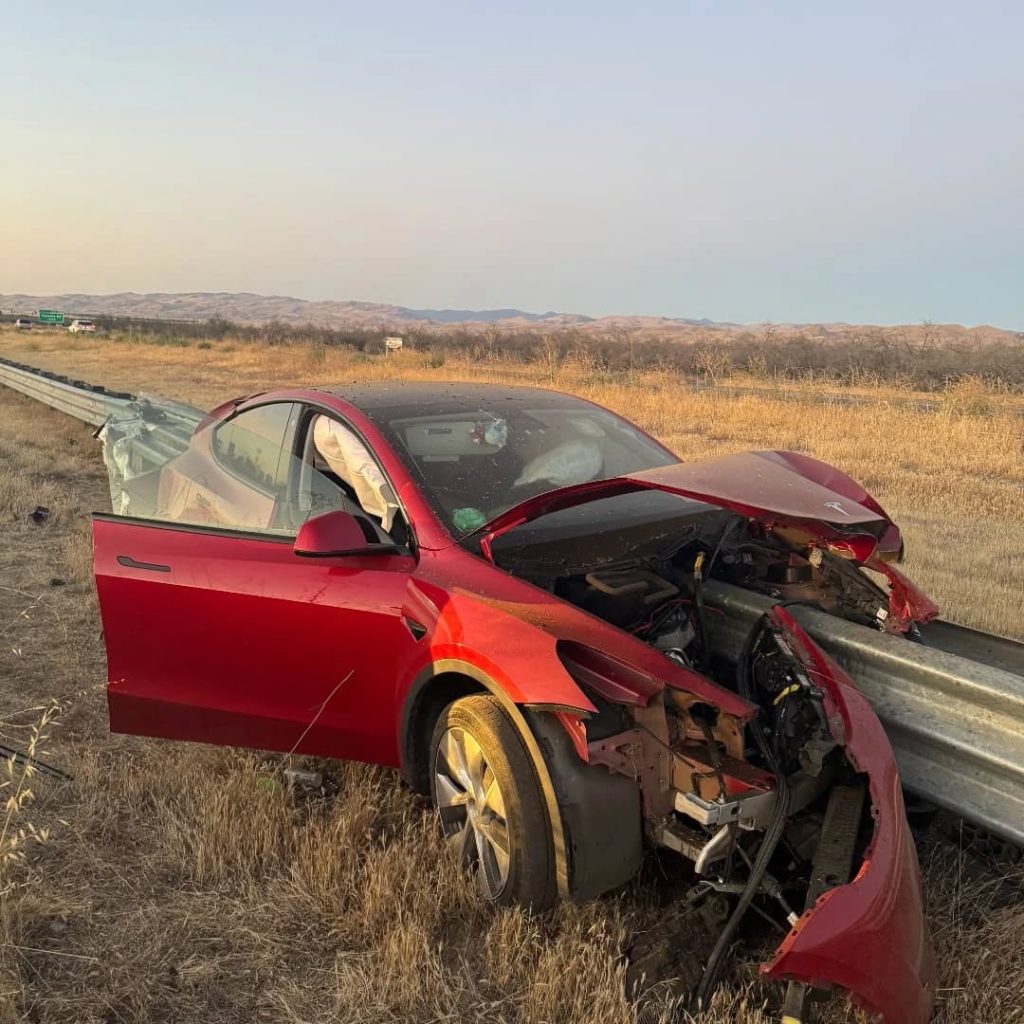
Credit: CHP Los Banos (via Facebook)

Credit: CHP Los Banos (via Facebook)
In a statement to SFGate, CHP officer Myles Anderson said that the driver only sustained minor injuries, while no arrests are made and drugs and alcohol are not suspected to have been involved. The report also notes that Tesla’s “cruise control and lane assistance features” were activated, according to Anderson. However, it’s not entirely clear if this is referring to Supervised Full Self-Driving (FSD), or to the cruise control and lane assist features baked into Autopilot.
At the time of writing, CHP has not yet responded to Teslarati’s request for clarification and additional details on the matter.
Tesla Crash Safety Ratings across its lineup: pic.twitter.com/ny30R7ceji
— TESLARATI (@Teslarati) July 1, 2025
READ MORE ON TESLA SAFETY: Tesla rolls out crucial new safety feature aimed at saving children
The news comes after Tesla has touted its vehicles as incredibly safe for many years. In December, for example, the company highlighted receiving top safety scores from regulators on four different continents throughout the world, including from the National Highway Traffic Safety Administration (NHTSA) and the Insurance Institute of Highway Safety (IIHS) in the U.S.
Tesla has also listed the goal of making its vehicles the safest on the road throughout the years, both in the overall design of its vehicles and in its Autopilot and Full Self-Driving (FSD) programs.
Tesla Model 3 ranks as the safest new car in Europe for 2025, per Euro NCAP tests
-

 Elon Musk1 week ago
Elon Musk1 week agoTesla investors will be shocked by Jim Cramer’s latest assessment
-

 News2 weeks ago
News2 weeks agoTesla Robotaxi’s biggest challenge seems to be this one thing
-

 News2 weeks ago
News2 weeks agoWatch the first true Tesla Robotaxi intervention by safety monitor
-

 Elon Musk2 weeks ago
Elon Musk2 weeks agoA Tesla just delivered itself to a customer autonomously, Elon Musk confirms
-

 News2 weeks ago
News2 weeks agoTesla Robotaxi rollout proves that Elon Musk still delivers, even if it’s late
-

 Elon Musk2 weeks ago
Elon Musk2 weeks agoxAI welcomes Memphis pollution results, environmental groups push back
-
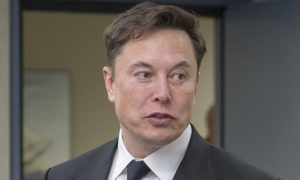
 Elon Musk2 weeks ago
Elon Musk2 weeks agoElon Musk commends Tesla team on successful Robotaxi launch
-

 Elon Musk2 weeks ago
Elon Musk2 weeks agoElon Musk confirms Tesla Optimus V3 already uses Grok voice AI


